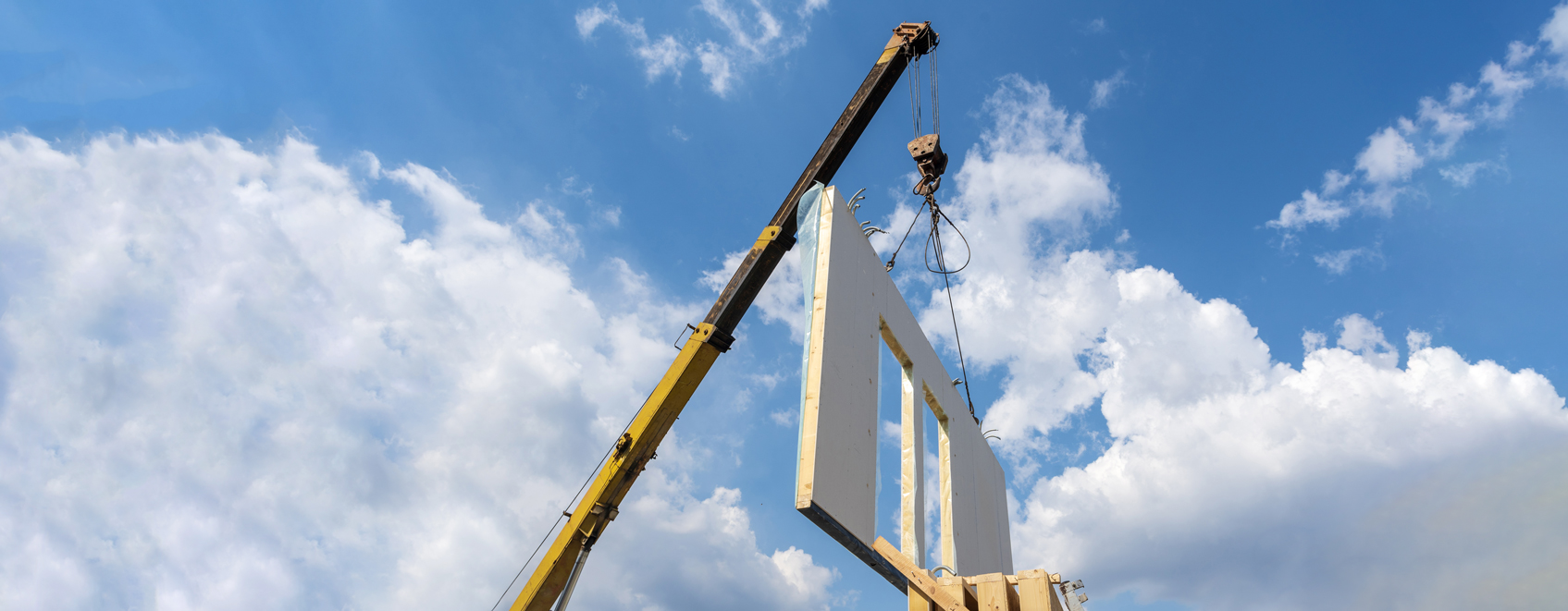.jpg?sfvrsn=1ab8f255_6)
Simple Solutions Blog
Simple Solutions Blog
One construction method that’s growing amid the pandemic

It’s no secret that construction has slowed in many states during the pandemic.
Although the industry has suffered, in these uncertain times construction continues. From building new hospitals to erecting makeshift care and testing centers in coronavirus hot spots, construction is essential to our way of life.
So what do we do when we live in a world where one cannot be on a jobsite but construction work must continue? That’s where modular construction and pre-fabrication come in.
The proof was in the pudding before the pandemic hit
Research and development spending by the top 2,500 construction companies has risen globally by approximately 77% since 2013, according to a recent McKinsey article. That is a definite sign of construction industry transformation—even before the pandemic hit. Additionally, the same article cites that the market share of permanent modular construction in North American real estate has grown by 50% from 2015 to 2018.Although life on the jobsite has started to return to “normal,” there’s no telling what the future holds for the COVID-19 pandemic. Amid uncertainty, questions are asked: do we need to construct buildings the same way we did in the past? It’s a valid question, especially as we discuss the benefits of modular construction.
Popular article: 10 business lessons contractors can learn from.
The benefits of modular construction
When pre-fabrication processes are optimized, modular can deliver a plethora of benefits over traditional construction—if appropriate for the project.
- Reduced cost: While this may not be possible with all modular construction projects, if a builder can develop a structure that has a repeatable process and a size that works with available land transport, there are savings to be had, according to a McKinsey publication.
- More certainty on both costs and build times: Again, a well-thought-out, repeatable concept is the key, as it not only impacts cost, but schedules can be forecasted with more certainty as well.
- Improved quality and safety: You cannot create a controlled environment when it comes to on-site construction projects. However, warehouse and factory conditions allow for much greater control and better conditions when it comes to health, safety and quality of the build.
The future of construction in the pandemic
Let’s be sure to pump the brakes here, the construction industry will most likely not shift to 100% modular and pre-fab builds. Traditional construction will be around for the foreseeable future, but just as other industries and processes are shifting, so is construction. The industry will see increased digitization and more remote ways of working when possible. Construction leaders are starting to conduct more business online, including the ordering of materials, cash flow processes and even regularly monitoring employees’ wellbeing.There’s one thing we know for sure: when it comes to construction, a lot of change is on the horizon. Make your predictions sooner rather than later, because the future is fast approaching.
Did you like this article? You may also like 5 tips to help grow your independent contractor business.
One construction method that’s growing amid the pandemic

It’s no secret that construction has slowed in many states during the pandemic.
Although the industry has suffered, in these uncertain times construction continues. From building new hospitals to erecting makeshift care and testing centers in coronavirus hot spots, construction is essential to our way of life.
So what do we do when we live in a world where one cannot be on a jobsite but construction work must continue? That’s where modular construction and pre-fabrication come in.
The proof was in the pudding before the pandemic hit
Research and development spending by the top 2,500 construction companies has risen globally by approximately 77% since 2013, according to a recent McKinsey article. That is a definite sign of construction industry transformation—even before the pandemic hit. Additionally, the same article cites that the market share of permanent modular construction in North American real estate has grown by 50% from 2015 to 2018.Although life on the jobsite has started to return to “normal,” there’s no telling what the future holds for the COVID-19 pandemic. Amid uncertainty, questions are asked: do we need to construct buildings the same way we did in the past? It’s a valid question, especially as we discuss the benefits of modular construction.
Popular article: 10 business lessons contractors can learn from.
The benefits of modular construction
When pre-fabrication processes are optimized, modular can deliver a plethora of benefits over traditional construction—if appropriate for the project.
- Reduced cost: While this may not be possible with all modular construction projects, if a builder can develop a structure that has a repeatable process and a size that works with available land transport, there are savings to be had, according to a McKinsey publication.
- More certainty on both costs and build times: Again, a well-thought-out, repeatable concept is the key, as it not only impacts cost, but schedules can be forecasted with more certainty as well.
- Improved quality and safety: You cannot create a controlled environment when it comes to on-site construction projects. However, warehouse and factory conditions allow for much greater control and better conditions when it comes to health, safety and quality of the build.
The future of construction in the pandemic
Let’s be sure to pump the brakes here, the construction industry will most likely not shift to 100% modular and pre-fab builds. Traditional construction will be around for the foreseeable future, but just as other industries and processes are shifting, so is construction. The industry will see increased digitization and more remote ways of working when possible. Construction leaders are starting to conduct more business online, including the ordering of materials, cash flow processes and even regularly monitoring employees’ wellbeing.There’s one thing we know for sure: when it comes to construction, a lot of change is on the horizon. Make your predictions sooner rather than later, because the future is fast approaching.

